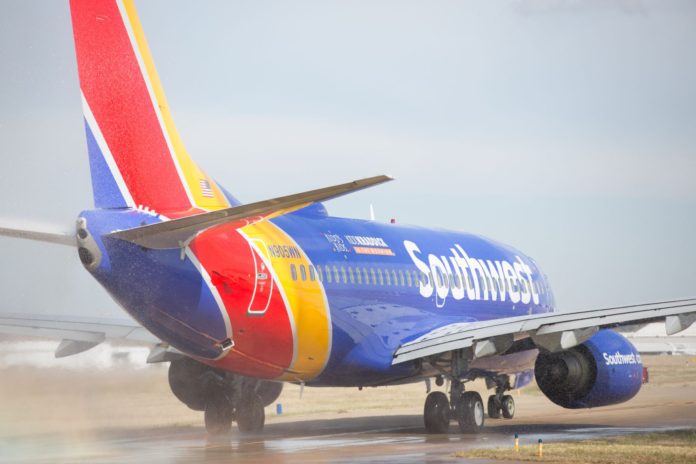Sonya Lacore has wanted to see an update of Southwest’s uniforms since she began working as a flight attendant 15 years ago.
She’ll finally get her wish next year, when the carrier completes the first overhaul of its work attire since 1996. The two-year effort was overseen by Lacore, now Southwest’s vice president of cabin services, and involved more than 40 workers from all uniform-wearing employee groups.
The change follows a rebranding of the airline in 2014 that included a new paint scheme on its planes, amid an ongoing push to attract more business travelers. The new, dressier uniforms might even help that corporate goal, although the projects are not related.
The old uniforms, which include collared shirts, khaki shorts, and white crew socks, will be replaced with a more modern look. Sorry, folks, but there won’t be a return to the 1970s when the airline was famous for decking out its flight attendants in orange hot pants, mini skirts, and white go-go boots.
“I wouldn’t say we were trying to go for more dressy,” Lacore said of the new uniforms, which are featured on the cover of the carrier’s in-flight magazine this month. “We were just trying to go for something a little more bold and modern.”
Those getting the new garb include flight attendants, baggage handlers, provisioning and cargo workers, customer service and operations agents and skycaps. Pilots’ uniforms will remain the same style but switch from navy blue to black and include a new selection of tie designs. Some of the fabrics used in slacks and shorts are made from recycled plastic bottles.
A variety of options are being offered to the airline’s 40,000 workers in uniform so they can choose pieces that match their personal taste. Some attendants will elect dressier clothes-“not stuffy, but dressy,” Lacore said-while others will stick with shorts and a simple top.
“Our employees are extremely passionate about what they wear, not just how they look, although that’s important,” Lacore said. “They wanted to make sure it had the fit, comfort, and functionality for their jobs.”
Options for female flight attendants, customer service agents, and gate agents include shorts, slacks, a polo, and blouses in several colors, a skirt and two dresses-one charcoal gray with a narrow red stripe down the front, the other black with a swoosh of red and blue that’s similar to the design that adorns the planes. Whether to retain shorts as part of the redo was in doubt until the group found a style considered flattering to most workers.
Male employees will be able to choose among gray shorts and slacks, polo and button-down shirts, a gray dress vest and ties. Jackets are available for both men and women.
Below-the-wing employees-those who work primarily on airport ramps and do jobs such as loading bags or replenishing aircraft galleys-were included in the selection of new outfits for the first time.
“In the past, they just wore what was given to them and were fine with that,” Lacore said. The workers wanted to make a good impression on passengers who can view them from onboard parked aircraft, she added. Now these workers will wear dark gray shorts, pants, jackets, and a variety of brightly colored shirts.
Employees will order pieces in January, and the official switch will occur in mid-June 2017.
The new uniforms, with more options for employees, are a source of agreement and a fresh look at an airline that is in the midst of rancorous contract negotiations with some unions. They also will help to complement the new livery Southwest has already rolled out on a portion of its fleet. “We wanted to look like one single, great, bold brand,” Lacore said.








